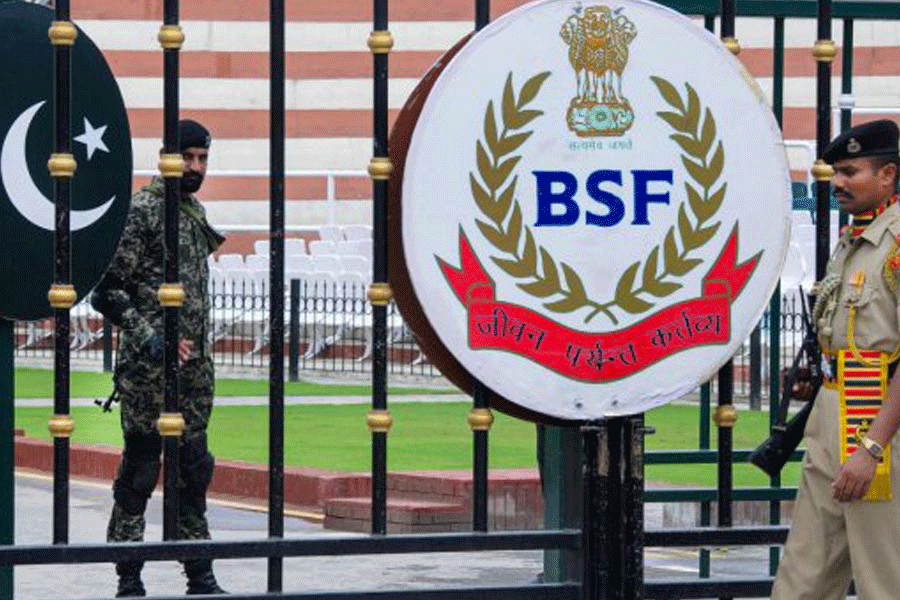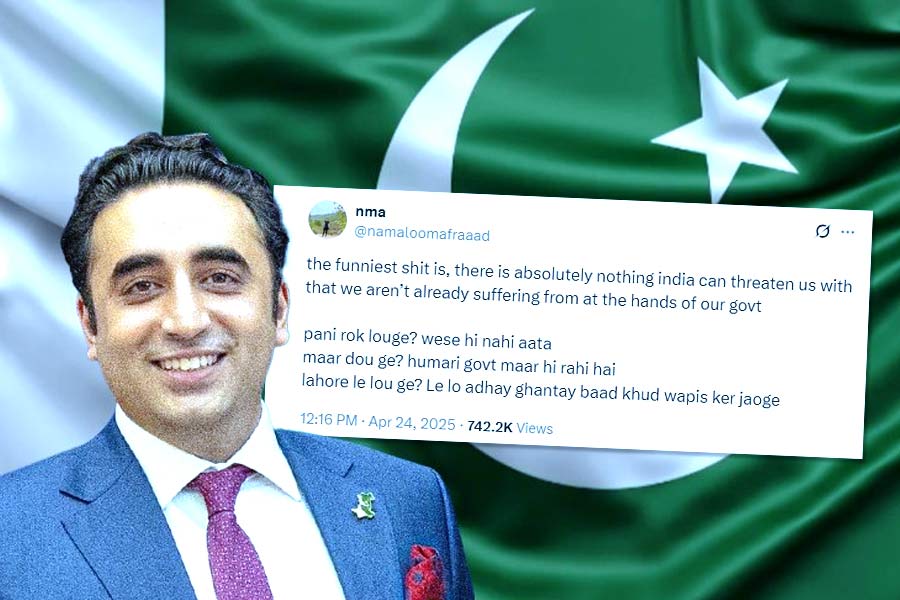Bombay Ice
By Leslie Forbes
Bantam, $ 10.25
Crime fiction writers, as a rule, are extremely reluctant to mix genres. The classic whodunit is one of the most rigorous of forms, virtually unchanged since Edgar Allan Poe introduced the private eye in the form of C. Auguste Dupin. Since then, there has been only one significant formal breakthrough in the detective novel ? the bumbling sidekick, also known as Dr Watson ? an innovation comparable to the introduction of the third actor in Greek tragedy by Sophocles.
In recent years, there have been attempts to extend the scope of the whodunit with varying degrees of success. Umberto Eco?s Name of the Rose, P.D. James?s Devices and Desires, and more recently Peter Hoeg?s Miss Smilla?s Sense of Snow, spring to mind. All three novels tried to move beyond crime fiction?s one-point agenda of revealing the criminal?s identity. A similar impulse seems to have moved Leslie Forbes to write Bombay Ice.
The book begins, in approved Bollywood style, with a flashback, in which Maya Sharma, wife of film director Prosper Sharma, falls to her death from a seventh-storey balcony. Years later, BBC reporter Rosalind Benegal (or Roz Bengal) arrives in Bombay to ostensibly chart the course of the monsoons ? ?a season in which the tempo of life and death in India increases? ? but in reality to unravel the mystery of the cryptic postcards she receives from her half-sister Miranda, the second Mrs Sharma.
An example: ?My husband is making an Indian version of Shakespeare?s Tempest. People tell me that he murdered his first wife, who was to play Miranda. It is very hot in Bombay. I am being followed by eunuchs and lepers.?
Who killed Maya Sharma? Soon this question becomes academic as Forbes plunges into her real narrative project: the city of Bombay. Not Bombay as it really is, but a Bombay of the mind. A Bombay peopled by hijras who paint like Raphaels, taxi drivers who dream of meeting Louis Malle in Cannes, film directors who talk like Oxbridge dons, gossip columnists who talk like Shobha De. Fact and fantasy are swirled together in a narrative cocktail that promises to deliver a memorable high but ends up giving a hangover. In one word: excess. Too many things jostle for attention in Bombay Ice. There are Roz?s Benegal periodic flashbacks about growing up in Kerala ? her mother who turned base metals into gold (cue for digression on Renaissance alchemy, via John Dee), her father who studied weather systems (cue for short note on Torricellian barometers and Mandelbrot on clouds). Then there are the chapters on hijra society ? struggling to move beyond stereotypes towards some sort of understanding. However, the bad faith lingers ? despite Forbes?s fairly extensive research on the community, the hijras in the book come across as either circus freaks or convenient corpses.
Forbes could also have worn her research more lightly ? here one suspects that the anxiety of Eco?s influence must have been working overtime. Bombay Ice teems with literary and cultural allusions, from Eng.Lit. as well as literatures in Indian languages. Vidyapathi and Kabir are quoted, and in one memorable passage, the last line of a Tagore short story (?Jibito o mrito?) is superbly paraphrased to describe the death of Maya Sharma. Satyajit Ray is quoted several times as explanatory glosses.
Such self-conscious textuality is a valid enough postmodernist stratagem but Forbes badly overdoes it with William Shakespeare?s Tempest. The denouement of the book occurs as Prosper Sharma shoots his Mughal-cum-Elizabethan version of the play at Elephanta. This section of the book almost passes into magic realism territory, with Prospero/Shah Jahan on his deathbed, about to leave the island. Filming this extravaganza, however, is a man called Prosper, whose wife is Miranda and sister-in-law Rosalind and who has earlier made a film called ?Cyclone?. This stretches the readers? credulity almost to breaking point without doing anything for the story. Yet, the use of textuality in crime fiction is by no means an unheard of phenomenon.
Michael Innes did it to superb effect in Hamlet, Revenge!, while both Agatha Christie and P.D. James have made clever use of John Webster?s play The Duchess of Malfi in their novels. Despite these flaws, however, Forbes?s book is a compulsive read. It contains many passages of absolutely brilliant writing, especially those describing the city of Bombay. Roz Benegal herself is a compelling heroine and her encounters with India?s inscrutable bureaucracy (personified in the improbably named Ashok Tagore) are rich in intended and unintended humour. On the other hand, the whodunit aspect of the book is rather thin on the ground. Benegal does spend a lot of time snooping around and getting into all sorts of trouble, but there is very little method in her madness.
The novel ends, appropriately enough, with a news item about Bombay changing its name to Mumbai. Names ? both of persons and places ? are important in this novel and Forbes seems to have driven by a need to reclaim Bombay from Mumbai, to create an enchanted isle secure from the taint of reality. If she ultimately fails in her project, it is nevertheless a splendid failure.
 Sunday, 27 April 2025
Sunday, 27 April 2025









